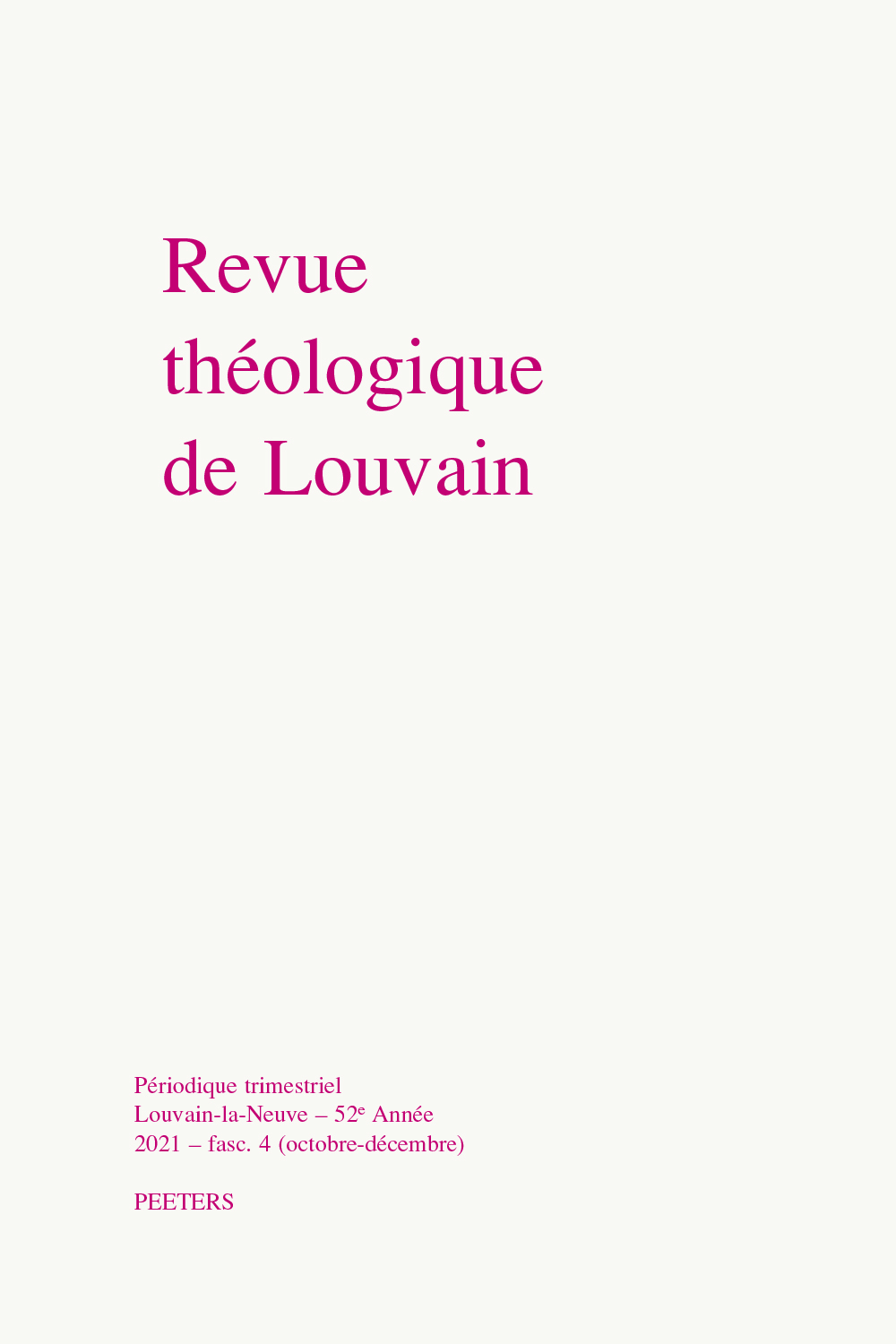 previous article in this issue previous article in this issue | next article in this issue  |

Preview first page |
Document Details : Title: De la vetus latina à l'hébreu pré-massorétique en passant par la plus ancienne Septante Subtitle: Le livre de Jérémie, exemple privilégié Author(s): BOGAERT, Pierre-Maurice Journal: Revue Théologique de Louvain Volume: 44 Issue: 2 Date: 2013 Pages: 216-243 DOI: 10.2143/RTL.44.2.2981473 Abstract : L’ancienne traduction latine de Jérémie (vetus latina) a été faite sur un texte grec qui représente la plus ancienne forme, très courte, de la Septante, et celle-ci est la traduction fidèle d’une forme ancienne de l’hébreu. Le présent exposé signale trois exemples, aux chap. 39 (LXX 45), 10 et 52. Surtout il vise à expliquer, par un tableau synchronique et son commentaire, le chemin par lequel une forme très ancienne de l’hébreu a pu se conserver en grec puis en latin. Tant en hébreu qu’en grec, le judaïsme palestinien a opéré une activité unificatrice aboutissant au texte proto-massorétique; dans un premier temps, celle-ci a été sans grand effet sur des zones périphériques. Ce n’est que dans les dernières décennies du IVe siècle que la chrétienté latine a connu des traductions sur des textes grecs révisés et ensuite la traduction de Jérôme sur l’hébreu. Pour le théologien, le livre de Jérémie pose plus nettement qu’ailleurs la question des frontières entre texte et commentaire. L’actualisation a joué avant, et continue de jouer après, la fixation du texte. The vetus latina (Old Latin) of Jeremiah translates an early, very short, text of the Septuagint (Old Greek), and this Old Greek version is the accurate translation of an early Hebrew text (Old Hebrew). This article proposes three examples: chap. 39 (LXX 45), 10, and 52. It especially tries to explain, with the help of a synchronistic table and its commentary, the way by which an old Hebrew text could be preserved first in Greek and later in Latin. Palestinian Judaism operated, in Hebrew and in Greek (revisions of the LXX), a standardisation which may be called proto-masoretic. It was without immediate efficacy on the peripheral areas. Only in the last decades of the fourth century the Latin Christianity received translations made on revised Greek texts and thereafter the new translation of Jerome on the Hebrew. To a theologian scholar the book of Jeremiah, more neatly than anywhere else, raises the question of the boundaries between text and commentary. Actualisation had a role before - and keeps a role after - the standardisation of the Biblical text. |
|


